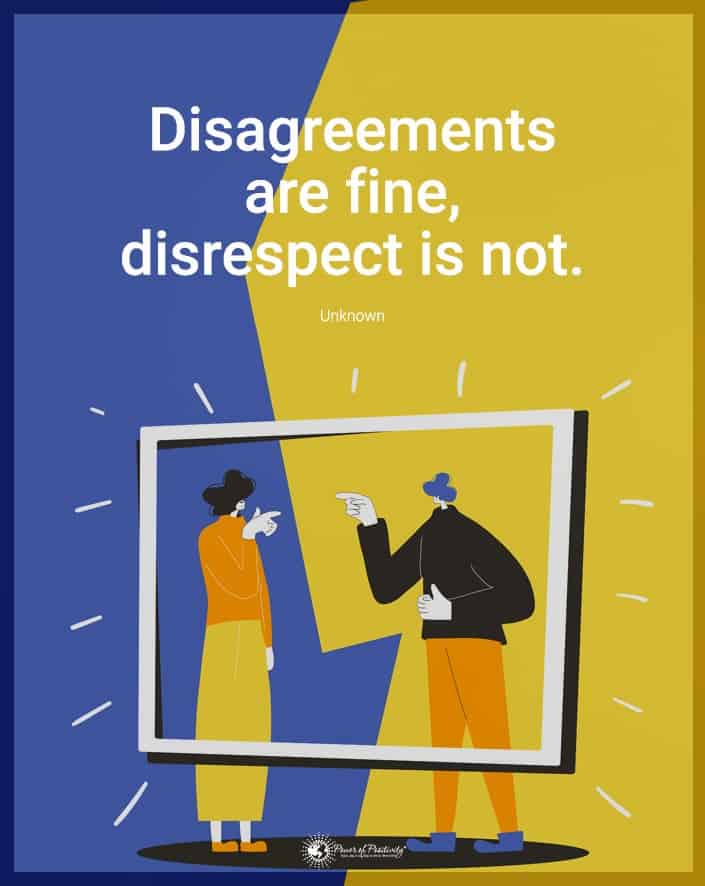Humans communicate with each other in many different ways. How you say, things are just as important as what you say. Your tone of voice can make a difference in getting your message across to others.
The beauty of the human language is the nuances like body language and vocal cues. Your tone can reinforce or contradict what you’re trying to articulate. Often, people aren’t aware of their tone until a caring friend brings it to their attention.
Even the most straightforward variation, such as emphasizing different words in the same sentence, can change the inferred meaning. Many misunderstandings happen because listeners take the speaker’s tone the wrong way. The tone makes the difference between effective communicators and ineffective ones.
Fifteen Ways Your Tone Impacts Communication Skills
If you want to have meaningful conversations in your personal and professional relationships, you must learn to control your tone. Use positive body language and facial expressions and practice being an active listener. Here are fifteen familiar voice tones and what they may say about you.
1. A Deep Voice
When you talk to someone in a deep, resonant voice, it commands attention. It conveys maturity and authority in a leader that people want to trust, says an article published by American Scientist. This is often the tone advertisers use to get the public’s attention and suggest a positive image for their goods and services.
Your voice’s pitch influences how others perceive you as a speaker, mainly when using a deep voice. However, using a deep tone that’s not natural for you can also imply anger or aggression. It can also mean using boldness when you’re scared or intimidated.
2. A Soft, Quiet Tone
Using a soft, quiet tone of voice can convey several meanings in your conversations. Some people have a mild disposition with a naturally gentle voice, both women and men. It can also give the impression that you are timid or weak, depending on the situation.
A soft tone can also convey a lack of words from being surprised or overwhelmed. It’s also the tone that you may use when you are consoling someone or you’re sad, confused or lack self-confidence. Some people speak quieter when they are seething with white-hot rage.
3. A Firm and Confident Voice
If you want to be genuine and trustworthy, you must speak in a tone of voice that is firm and confident. Such a tone is essential for people in sales or business transactions. It implies that you believe in yourself and that you’re a person of your word.
This tone lets your partner know that you’re being candid in personal relationships. Your firm voice shows that you mean what you say and can be trusted. It’s also a tone that lets your children know that you’re the parent and the authoritative figure in the home.
4. Calm Breathing
Did you know that listeners also get unspoken communication from your breathing patterns in your tone of voice? It’s a quick giveaway to your emotions and how you feel about what you’re saying. If these components aren’t congruent, they can tell.
You probably experience calm breathing during normal conversation unless you have a respiration issue. It’s relaxed, natural, and comes across to the listener as authentic. However, your breath may change during a conversation when you convey emotion while telling a story.
5. Short, Quick Breaths
Rapid breathing during a conversation either shows strong emotion or that you’ve run to talk to somebody. It can also imply that you are anxious or distressed. Short, quick breaths are often present when you are worried about how the listener will respond to what you’ve said.
Such breathing can also give others the impression that you’re flighty or unsure of your words. The next time you find yourself out of breath while conversing with others, take a few deep breaths and calm yourself. Anxiety can often make people chat rapidly and loudly, which takes a lot of breath out of them.
6. Deep, Strong Breathing
When your tone of voice is matched with intense, deliberate breathing, it’s as emotional as using quick breaths. It suggests that although the person may not like what you’re saying, you remain persistent and determined.
It’s also a typical breathing pattern for energetic and deep in thought. However, if it’s combined with aggressive expressions and body language, it shows that you have bottled-up anger. Intense, deep breathing is even more alarming when the tone is cold and malicious, like Darth Vader.
7. Using a Normal Volume
The volume of your voice works in tandem with your tone of voice and other vocal cues. An article published by Frontiers in Psychology explains that voice volume is often determined by culture. Even in the same culture, average volume can vary from region to region.
You instinctively use this norm when communicating in public or within your circle. When you speak in a sufficient volume, it shows that you have self-control and are willing to be an active listener. Your volume only changes when it emphasizes your emotions.
8. A Loud Tone
Some people are just loud talkers by nature. They don’t mean to yell or be obnoxious because it’s their normal voice. They can be noisy when they’re happily chatting, or they can turn up the volume when they are angry or in despair.
In general, a loud tone of voice expresses highly emotionally-charged words. Maybe you’re one of the countless people who raise their voices only in anger or extreme situations. Blaring conversation can also suggest impatience or aggression.
9. A Whispered Tone
A whispered tone of voice is usually reserved for confidential conversations or in an atmosphere that needs silence, like a hospital or library. Other than that, whispering isn’t acceptable in polite society. A quiet tone can imply that you are shy or have low self-esteem.
If your voice is too whisper-soft, people may not hear the whole conversation, which can cause misunderstandings. Maybe you try to control your anger or distress by using a hushed tone. It all depends on the context and body language.
10. Rapid Speech
The speed of your conversation is also culturally determined. Even in America, people in northern states usually speak quicker than those in the southern states. However, some people have a brisk speech by nature.
A rapid speech pattern is typical of people who are nervous or high-strung. If this is your tone, you may give the impression that you’re in a hurry and aren’t listening. Consider taking a breath and reducing your chattering speed.
11. Slow, Deliberate Speech
People in deep concentration often use slow, deliberate tones because they are “thinking out loud.” This may be your case, or your speech pattern could be part of your culture. Or you may be a person who tries to be precise with your words.
Often, teachers may reduce the speed of their conversation for younger students to understand new concepts. However, it’s condescending and arrogant if you use such a tone with adults. It’s also a usual pattern used to convey frustration or anger.
12. Irregular Speed
People who are unsure of what they’re saying may vary in speed within their conversation. Their thoughts and emotions are all over the place, and they can’t adopt a regular rate or tone of voice. It may denote anxiety, confusion, or an impasse.
13. Well-Defined Articulation
People view you as friendly, confident, and intelligent when you speak clearly. Correct diction and articulation are imperative for leaders and public speakers. It’s also important to communicate clearly within your circle to avoid misunderstandings.
14. Overly Emphasized Articulation
If you’ve taken speech, acting, or voice lessons, you learned to practice proper articulation techniques. Maybe you stood in front of a mirror and said practice phrases for hours on end. If your tone and articulation are overly done, you may give others the impression that you are fake or snobby.
15. Imprecise or Stumbling
It’s easy to get embarrassed or confused and stumble on your words a bit. Such clumsiness can be endearing for teenagers who are newly discovering love. Sometimes, adult lovers experience awkward moments when they are expressing sentiments.
Stumbling speech can also message that you’re insecure or don’t have enough knowledge about your subject. You may feel so overwhelmed that you’re at a loss for words. Depending on the circumstances, it can also be a sign of aggression or inhibition.
Final Thoughts on How Your Tone of Voice Impacts Your Interactions
You can say the exact three words and give them several different meanings by the tone you use. If you want to be an effective communicator in personal or professional conversation, your tone of voice can make all the difference. Carefully monitoring your verbal and nonverbal cues will help get your message across correctly, and it will also avoid misunderstandings and hurt feelings.





















